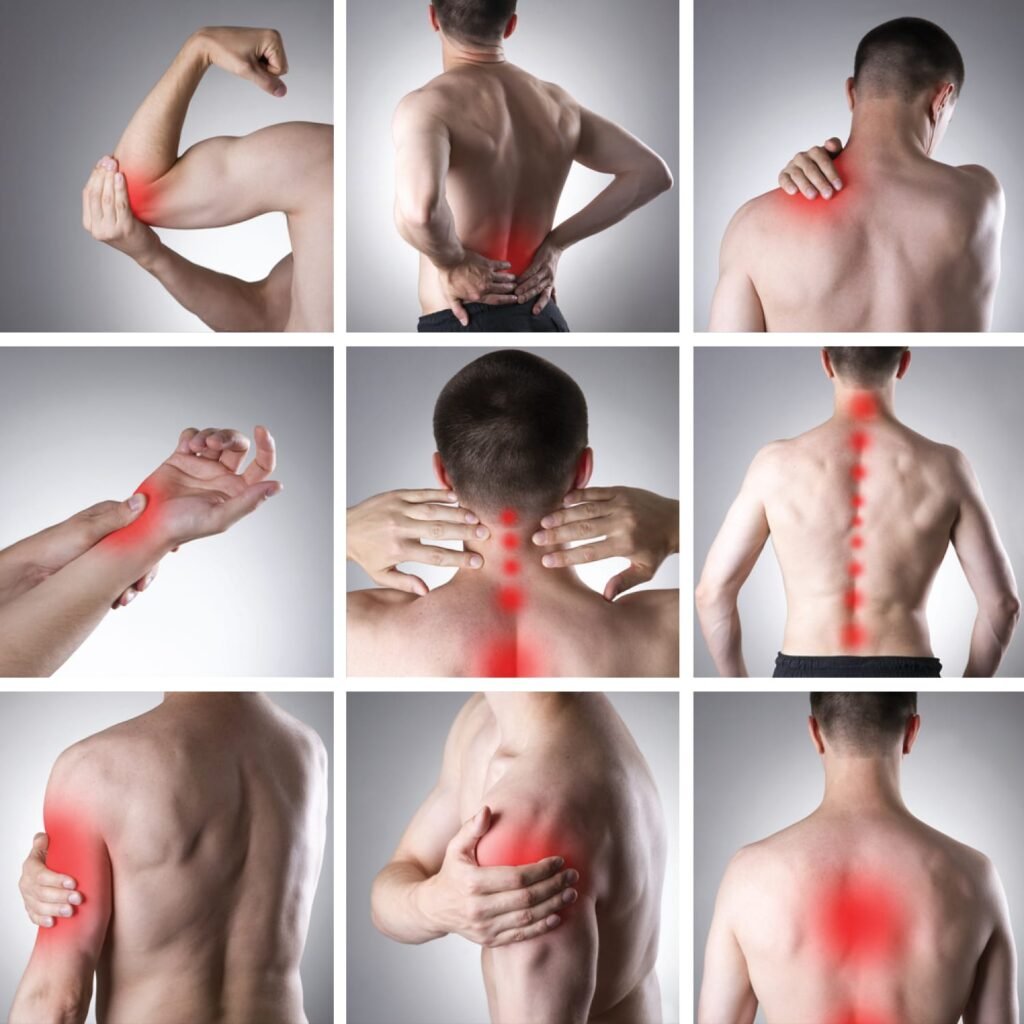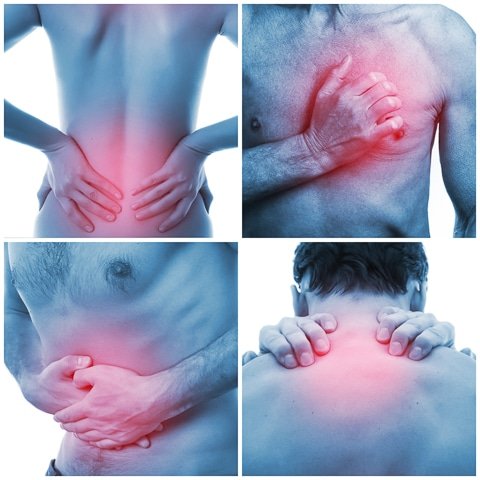Causes Muscle Spasms or Cramps

Understanding and Managing Muscle Spasms or Cramps.
Muscle spasms, also known as cramps, are sudden, involuntary contractions of one or more muscles. These painful episodes can last anywhere from a few seconds to several minutes and are common occurrences that affect people of all ages. Understanding what causes muscle spasms or cramps is essential for both prevention and effective treatment.
Muscle spasms or cramps can occur during physical activity, at rest, or even while sleeping. They can affect any muscle in the body, but they most commonly occur in the legs, feet, and hands. Various factors contribute to these muscle issues, including dehydration, nutritional deficiencies, overexertion, and certain medical conditions.
In this blog post, we will explore the different causes of muscle spasms or cramps, discuss preventive measures, and review treatment options. By gaining a better understanding of what triggers these painful muscle contractions, you can take steps to minimize their occurrence and manage them effectively when they do happen.
Muscle Physiology
To understand what causes muscle spasms or cramps, it’s important to first grasp the basics of muscle physiology. Muscles are made up of fibers that contract and relax in response to signals from the nervous system. These contractions allow us to perform a wide range of movements, from simple actions like walking to complex activities like playing a musical instrument.
How Muscles Work
Muscles work by receiving electrical impulses from nerves. When a muscle receives a signal, it contracts, pulling on tendons that are attached to bones, which then results in movement. This process involves the interaction of two key proteins within muscle fibers: actin and myosin. These proteins slide past each other, shortening the muscle fiber and generating force.
Mechanism of Muscle Contraction and Relaxation
Muscle contraction begins when a nerve impulse triggers the release of calcium ions within the muscle fibers. These calcium ions bind to troponin, a protein that allows myosin to bind to actin, thus starting the contraction process. After the contraction, calcium ions are pumped back out of the muscle fibers, causing the muscle to relax.
When this finely tuned process is disrupted, it can lead to muscle spasms or cramps. Several factors can interfere with normal muscle contraction and relaxation, including electrolyte imbalances, dehydration, and fatigue.
Common Causes of Muscle Spasms or Cramps
Muscle spasms or cramps can be triggered by a variety of factors, often involving issues related to muscle function, hydration, and overall health. Understanding these common causes can help in preventing and managing these painful occurrences. Here are some of the most frequent contributors to muscle spasms or cramps:
Dehydration
One of the most common causes of muscle spasms or cramps is dehydration. When the body lacks sufficient water, it disrupts the balance of electrolytes like sodium, potassium, and calcium, which are essential for proper muscle function. Without these electrolytes, muscles can become more prone to involuntary contractions.
Electrolyte Imbalance
Electrolytes play a crucial role in muscle contractions. An imbalance in electrolytes, whether due to dehydration, poor diet, or excessive sweating, can lead to muscle spasms or cramps. Potassium, calcium, and magnesium deficiencies are particularly known to cause muscle issues.
Overexertion and Muscle Fatigue
Engaging in intense physical activity without adequate preparation or rest can cause muscle fatigue, leading to spasms or cramps. Overworking the muscles depletes their energy reserves and can result in involuntary contractions as the muscles struggle to recover.
Poor Blood Circulation
Insufficient blood flow to the muscles can cause muscle spasms or cramps. This is often due to prolonged periods of inactivity or conditions that restrict blood flow, such as peripheral artery disease. Proper circulation is necessary to deliver oxygen and nutrients to muscle tissues.
Nutritional Deficiencies
Nutritional deficiencies are a significant factor in what causes muscle spasms or cramps. Proper nutrition is essential for maintaining muscle health, as it ensures that muscles receive the necessary vitamins and minerals to function correctly. Here are some key nutritional deficiencies that can lead to muscle spasms or cramps:
Role of Vitamins and Minerals
Certain vitamins and minerals play crucial roles in muscle function. Deficiencies in these nutrients can disrupt normal muscle activity and increase the likelihood of spasms or cramps. Here are the most important ones:
- Magnesium: Magnesium is vital for muscle relaxation and contraction. A deficiency can cause increased muscle excitability and spasms.
- Calcium: Calcium is essential for muscle contractions. Low levels can interfere with normal muscle function and lead to cramps.
- Potassium: Potassium helps regulate muscle contractions. An imbalance, particularly low potassium levels, can cause muscle cramps.
- Vitamin D: Vitamin D is necessary for calcium absorption. A deficiency can lead to impaired muscle function and cramps.
Impact of Diet on Muscle Health
A well-balanced diet that includes a variety of nutrient-rich foods is crucial for preventing muscle spasms or cramps. Diets lacking in fruits, vegetables, lean proteins, and whole grains can result in deficiencies that affect muscle health. Ensuring adequate intake of these nutrients through diet or supplements can help maintain proper muscle function.
Role of Hydration in Muscle Function
Hydration is closely linked to nutritional balance. Drinking enough water is essential for maintaining electrolyte levels, which are critical for muscle contractions. Dehydration can exacerbate nutritional deficiencies and lead to muscle spasms or cramps.

Medical Conditions Contributing to Muscle Spasms or Cramps
Certain medical conditions are significant contributors to muscle spasms or cramps. These conditions can affect muscle function directly or indirectly by altering the body’s balance of nutrients, electrolytes, and nerve signals. Understanding the link between these conditions and muscle spasms or cramps can aid in managing symptoms more effectively.
Neurological Disorders
Neurological disorders affect the nervous system and can interfere with the signals that control muscle contractions. Some key neurological conditions that can cause muscle spasms or cramps include:
- Multiple Sclerosis (MS): MS damages the protective covering of nerves, leading to disrupted nerve signals and resulting in muscle spasms or cramps.
- Parkinson’s Disease: This condition affects movement control, often leading to muscle rigidity and spasms.
- Amyotrophic Lateral Sclerosis (ALS): ALS impacts motor neurons, causing muscle weakness and frequent spasms.
Metabolic Conditions
Metabolic conditions disrupt the body’s ability to process and balance nutrients, which can lead to muscle spasms or cramps. Key conditions include:
- Diabetes: Poorly managed diabetes can cause peripheral neuropathy, where damaged nerves lead to muscle cramps.
- Hypothyroidism: An underactive thyroid can result in muscle weakness and cramps due to reduced metabolic activity.
Hormonal Imbalances
Hormonal imbalances can significantly impact muscle function. Conditions that cause these imbalances include:
- Hyperparathyroidism: Overactivity of the parathyroid glands can lead to elevated calcium levels, causing muscle spasms.
- Adrenal Insufficiency: Insufficient adrenal hormone production can affect electrolyte balance, leading to muscle cramps.
Chronic Conditions
Certain chronic conditions are known to be associated with muscle spasms or cramps:
- Chronic Kidney Disease: Impaired kidney function can lead to imbalances in electrolytes such as calcium, potassium, and magnesium, causing muscle cramps.
- Liver Disease: Liver dysfunction can lead to muscle cramps due to altered electrolyte levels and fluid balance.
Medications and Substances Contributing to Muscle Spasms or Cramps
Certain medications and substances are known to cause muscle spasms or cramps. These involuntary contractions can occur as side effects of various drugs or as a result of substance withdrawal. Understanding how these factors contribute to muscle spasms or cramps can help in managing and mitigating their impact.
Common Medications That Cause Muscle Spasms or Cramps
Several types of medications are associated with muscle spasms or cramps. These include:
- Diuretics: Often prescribed for high blood pressure, diuretics can lead to electrolyte imbalances by increasing urine output. This can result in low levels of potassium, magnesium, and calcium, causing muscle cramps.
- Statins: Used to lower cholesterol, statins can cause muscle pain and cramps as a side effect in some individuals.
- Beta-agonists: Medications used for asthma and other respiratory conditions can sometimes lead to muscle cramps.
- Antipsychotics: These can cause involuntary muscle movements, including cramps, as a side effect.
- Laxatives: Overuse of laxatives can disrupt electrolyte balance, leading to muscle spasms.
Substance Withdrawal
Withdrawal from certain substances can also cause muscle spasms or cramps. These include:
- Alcohol: Chronic alcohol use and withdrawal can lead to muscle cramps due to dehydration and electrolyte imbalances.
- Opioids: Withdrawal from opioid medications can cause muscle spasms and cramps as the body readjusts to the absence of the drug.
- Caffeine: High intake or sudden withdrawal from caffeine can sometimes lead to muscle cramps.
Impact of Stimulants and Recreational Drugs
Stimulants and recreational drugs can also play a role in causing muscle spasms or cramps:
- Cocaine and Amphetamines: These stimulants can lead to severe muscle cramps due to their impact on muscle metabolism and electrolyte balance.
- MDMA (Ecstasy): Known for causing dehydration and electrolyte imbalances, which can lead to muscle cramps.

Physical Activity and Exercise
Physical activity and exercise play a crucial role in muscle health, but they can also contribute to muscle spasms or cramps, especially when not approached with proper care and preparation. Understanding how physical activity affects muscles can help prevent and manage these painful episodes effectively.
Impact of Intense Physical Activity
Engaging in intense physical activity, such as vigorous exercise or sports, can lead to muscle fatigue and strain. During strenuous activities, muscles can become overworked and depleted of energy and electrolytes, increasing the risk of spasms or cramps.
Importance of Warm-Up and Cool-Down Exercises
Warm-up and cool-down exercises are essential for preparing muscles before exercise and aiding in recovery afterward. A proper warm-up increases blood flow to muscles, enhancing their flexibility and readiness for activity. Cooling down helps to gradually decrease heart rate and relax muscles, reducing the likelihood of cramps.
Role of Stretching in Preventing Spasms
Stretching before and after exercise helps maintain muscle flexibility and range of motion. Tight muscles are more prone to spasms and cramps, so incorporating stretching exercises into a routine can help prevent these issues.
Environmental Factors
Environmental factors can significantly influence what causes muscle spasms or cramps, affecting muscle function and overall health. Understanding these factors can help in minimizing their impact and managing muscle-related issues effectively.
Influence of Temperature and Weather Conditions
Extreme temperatures, both hot and cold, can contribute to muscle spasms or cramps:
- Heat: High temperatures can lead to dehydration and electrolyte imbalances, increasing the likelihood of muscle cramps.
- Cold: Cold weather can cause muscles to contract and tighten, leading to spasms, especially if not properly warmed up.
Effect of Humidity and Hydration
Humid conditions can exacerbate dehydration, which is a common trigger for muscle spasms or cramps. Maintaining adequate hydration is crucial in regulating electrolyte levels and preventing muscle issues.
Altitude and Oxygen Levels
At higher altitudes, oxygen levels are lower, which can impact muscle function and increase the risk of cramps during physical activity. Acclimatization and proper hydration are key to adapting to altitude-related challenges.
Injury and Muscle Damage
Injuries and muscle damage are significant factors in what causes muscle spasms or cramps, often resulting from overuse, accidents, or improper exercise techniques. Understanding the impact of injuries on muscle health can help in preventing and managing these painful occurrences effectively.
Muscle Strain and Overuse
Muscle strain occurs when muscles are stretched or torn due to overexertion or repetitive movements beyond their capacity. This can lead to inflammation and muscle spasms as the body attempts to protect and repair the damaged tissue.
Healing Process and Risk of Spasms
During the healing process of muscle injuries, such as strains or tears, muscles may become more susceptible to spasms. Scar tissue formation and muscle imbalances can contribute to involuntary contractions and cramps as the injured area recovers.
Preventive Measures to Avoid Muscle Damage
Preventing muscle injuries and damage involves several strategies:
- Proper Warm-Up: Ensuring muscles are adequately warmed up before physical activity can reduce the risk of strains and spasms.
- Gradual Progression: Gradually increasing exercise intensity and duration allows muscles to adapt and reduces the likelihood of overuse injuries.
- Correct Technique: Using proper technique during exercise and sports activities minimizes stress on muscles and decreases the risk of strains and tears.
Age-Related Factors
Age-related factors contribute significantly to muscle spasms or cramps, as muscles and related systems undergo changes over time. Understanding these factors can help individuals manage muscle health effectively as they age.
Muscle Mass and Strength Decline
As people age, there is a natural decline in muscle mass and strength, known as sarcopenia. This loss of muscle tissue can increase the likelihood of muscle spasms or cramps, as weakened muscles may struggle to maintain proper function during physical activity.
Reduced Flexibility and Joint Stiffness
Joint stiffness and reduced flexibility are common with aging, which can affect muscle function and increase the risk of spasms or cramps. Tight muscles and limited range of motion contribute to muscle imbalances and strain.
Changes in Hormonal Levels
Hormonal changes, such as decreased estrogen and testosterone levels in older adults, can impact muscle health and function. Hormonal imbalances may contribute to muscle weakness, fatigue, and susceptibility to spasms or cramps.
Treatment Options
Understanding treatment options for muscle spasms or cramps is crucial for managing these painful episodes effectively. Depending on the underlying cause and severity of the spasms, various approaches can be taken to alleviate symptoms and promote muscle health.
Home Remedies
- Hydration: Ensuring adequate hydration is essential to prevent dehydration-related muscle spasms. Drinking water and electrolyte-rich fluids can help maintain proper electrolyte balance.
- Stretching: Gentle stretching exercises can relieve muscle tightness and prevent cramps. Focus on stretching the affected muscle groups regularly, especially before and after exercise.
- Heat or Cold Therapy: Applying heat packs or cold compresses to the affected muscles can help relax spasms and reduce inflammation. Experiment with both to find which works best for you.

Medical Treatments
Medications: Depending on the severity, doctors may recommend over-the-counter or prescription medications to relieve muscle spasms. These can include muscle relaxants or drugs targeting the root causes of the spasms.
Physical Therapy: A physical therapist can prescribe tailored exercises and techniques aimed at strengthening muscles, enhancing flexibility, and reducing spasms’ frequency.
Massage Therapy: Massage therapy can effectively alleviate tense muscles and enhance blood circulation, thereby lowering the risk of spasms. Therapists often target specific muscle groups prone to cramping.
When to Seek Medical Help
Persistent Symptoms: If muscle spasms persist despite home remedies or occur frequently without an obvious cause, it’s advisable to seek medical advice for further evaluation and treatment.
Underlying Conditions: If spasms are linked to underlying medical conditions such as diabetes, thyroid disorders, or neurological issues, proper medical management is essential for addressing the root cause.

